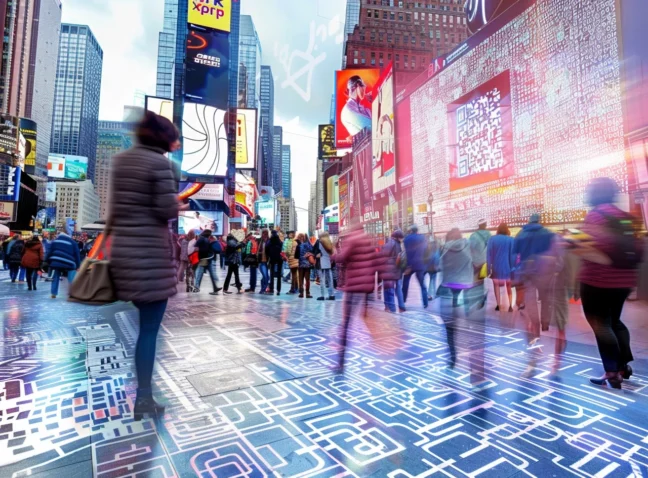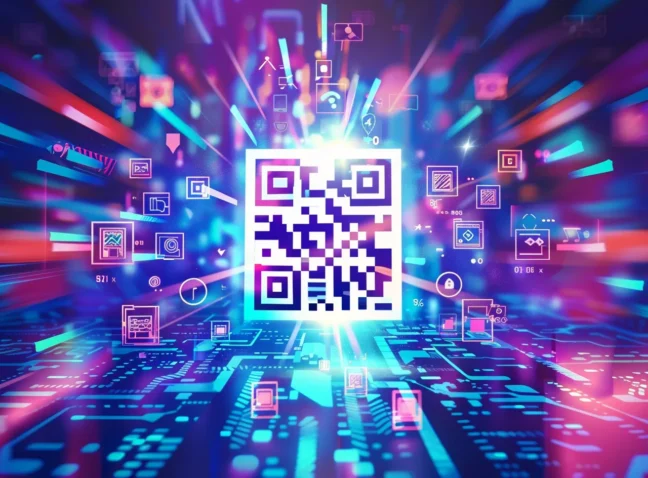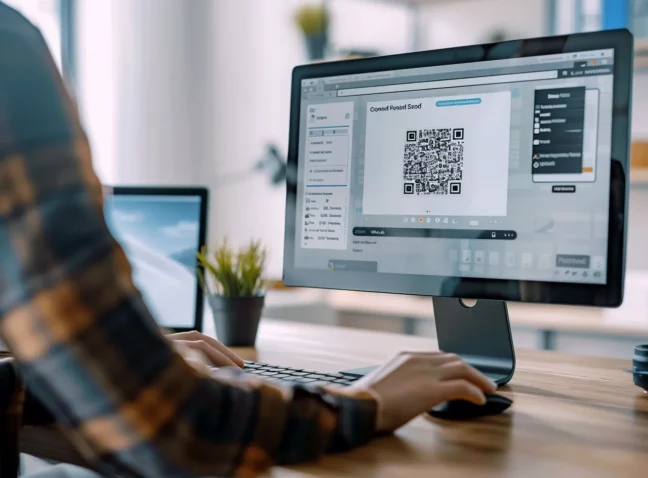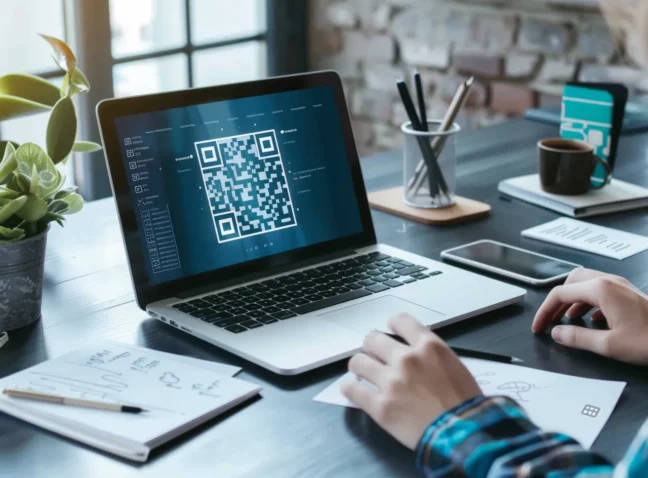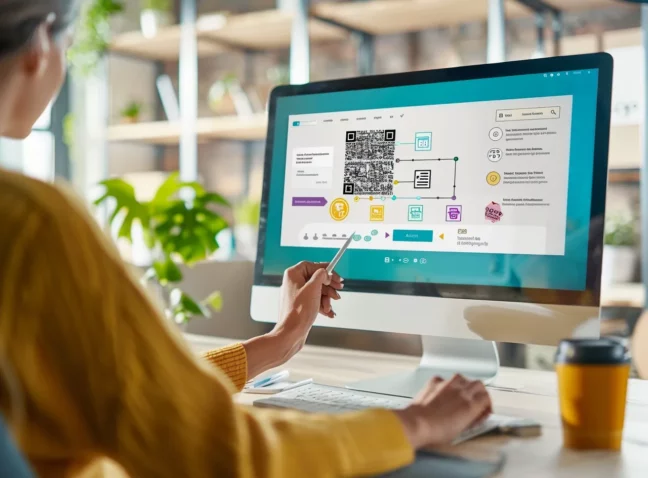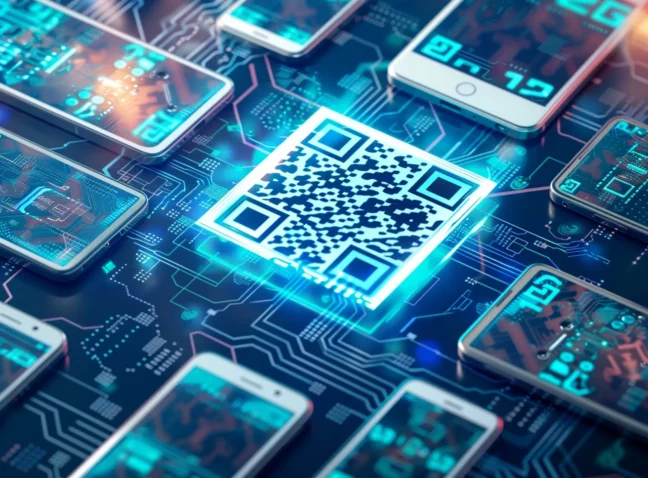In today’s classrooms, technology plays an increasingly important role in facilitating learning and engagement. One such technological tool that has gained traction is QR codes. These simple, square-shaped codes can be scanned using a smartphone or tablet, providing students with instant access to a wealth of information and resources. QR codes have the potential to transform the way students interact with educational materials, making learning more interactive, accessible, and fun.
Whether you’re a teacher looking to incorporate QR codes into your lesson plans or a student eager to explore new ways of learning, this article will provide you with valuable insights into the world of QR codes in the classroom. Read on to discover how QR codes can help create innovative learning experiences that engage and inspire.
Boost Learning Engagement with QR Codes in Education
QR codes breathe new life into education, perfectly connecting students to a world of digital resources. Their introduction into classrooms marks a smart fusion of tech with learning, inviting an interactive approach that keeps students keen and connected. Imagine turning a static page into a portal to multimedia content, where a simple scan throws open the doors to videos, quizzes, and more, catering to every learner’s preference. This adaptability not only enriches the learning experience but also supports teachers in crafting lessons that resonate with every student, fostering a truly inclusive and engaging educational journey.
Unblock the Potential of QR Codes in Classrooms: Innovative Learning & Interaction
Integrating QR codes into educational settings transforms traditional learning environments into interactive and personalized experiences. With an impressive 87% of educators affirming that these codes significantly improve student engagement, it’s clear that this technology is reshaping how information is accessed and processed in our classrooms.
Notably, between 2020 and 2021, the use of QR codes in educational institutions surged by 45%, underscoring their growing importance in facilitating a modern learning journey. Students, too, recognize the value, with 65% reporting a deeper understanding of subjects thanks to QR-coded materials. These digital gateways not only provide instant access to virtual labs and resources for a range of subjects but also support innovative teaching models like the flipped classroom, enhancing the effectiveness of home study and in-class discussions.
Moreover, a notable reduction in administrative tasks by up to 30% allows teachers to focus more on guiding and less on managing. Over 80% of educators also note that QR codes enable tailored learning paths, making education more adaptable to individual needs. This integration of technology is not just a trend; it’s a testament to the evolving landscape of education, offering a richer, more engaging learning experience.
Transforming Learning: QR Codes for Classrooms Drive Interactive Education
Integrating QR codes into learning environments marks a pivotal stride in bridging the gap between traditional teaching methods and the digital age. By embedding these codes into educational materials, instructors are able to provide instant access to a myriad of supplementary resources, including videos, articles, and interactive assignments. This not only enhances the learning experience by making it more dynamic and engaging but also allows for a personalized approach to education. Students can explore topics at their own pace, delving deeper into areas of interest or spending extra time where they need more support.
Educators, on the other hand, can utilize QR codes to streamline administrative tasks and focus more on teaching rather than paperwork. The simplicity of scanning a code with a smartphone opens up a world of educational possibilities, making learning more accessible, interactive, and efficient for everyone involved:
- A significant majority of 87% of educators have observed a notable increase in student engagement when incorporating QR codes into their teaching strategies. This statistic, highlighted in a 2023 report by Education Week, underscores the impact of QR codes in making learning more interactive and captivating for students.
- The adoption of QR codes within educational institutions witnessed a remarkable 45% increase between the years 2020 and 2021, as reported by EdTech Magazine in 2022. This surge reflects the growing recognition of QR codes as a valuable tool in facilitating access to educational content and resources.
- According to a 2023 study by EdSurge, 65% of students have reported achieving a deeper understanding of their subjects through the use of materials augmented with QR codes. This demonstrates the effectiveness of QR codes in enhancing the comprehension and retention of educational content.
- Forbes, in a 2022 article, revealed that QR codes have the potential to reduce administrative tasks by up to 30% within educational settings. This reduction significantly alleviates the workload on educators, allowing them to allocate more time and resources towards teaching and student interaction.
- Over 80% of educators have recognized the role of QR codes in enabling tailored learning paths for students, as highlighted by The Guardian in 2023. This personalization of the learning experience ensures that students can navigate their educational journey in a way that best suits their individual learning styles and needs.
QR Codes for Learning Spaces: Downsides Unveiled
Despite the benefits, there are some drawbacks to incorporating QR codes in educational settings. Firstly, there’s a reliance on technology, particularly smartphones or tablets, which might pose a challenge in schools with limited access to these devices.
Moreover, the potential for distraction is a concern, as students may misuse mobile devices for non-educational purposes, diverting their attention from learning tasks. Additionally, the digital divide becomes apparent, with not all students having equal access to the technology required to scan QR codes, thereby potentially widening socio-economic disparities.
Lastly, privacy concerns arise when linking to external content, raising apprehensions about the security of personal data. As we embrace innovative teaching tools like QR codes, it’s crucial to navigate these challenges thoughtfully, ensuring equitable access and safeguarding student privacy.
QR Codes for Educational Spaces: Addressing Challenges and Solutions
QR codes have woven their way into the fabric of educational strategies, offering a bridge between physical learning materials and digital resources. Their integration into classrooms presents an intriguing avenue for blending traditional teaching methods with the interactivity and vast informational resources available online. However, navigating the use of QR codes in educational spaces is not without its challenges. From technical hiccups to disparities in student access, the journey to effectively incorporating these codes into learning environments prompts a careful consideration of both their benefits and limitations:
- Over 60% of educators have raised concerns regarding QR codes as a double-edged sword in classrooms. While these codes open doors to instant information, EdSurge in 2021 highlighted the potential for distractions, leading students away from task-focused learning and towards off-task behavior. This statistic underscores the need for structured guidelines and mindful integration of technology in educational settings.
- The effectiveness of QR codes in enhancing student interaction with learning materials has been questioned, with 45% of students reporting confusion and difficulties in engaging with QR code-based activities, according to The Chronicle of Higher Education in 2022. This reflects a gap in digital literacy and calls for more intuitive instructional designs that can lower the barrier to entry for all students.
- Despite the potential of QR codes to enrich educational content, only 30% of teachers utilize them regularly in their teaching practices. Education Week in 2023 cited technical issues and a lack of student engagement as significant obstacles, pointing to the need for more robust support systems and training for educators to navigate these challenges effectively.
- The digital divide remains a persistent issue in the integration of technology in education. NPR in 2023 reported that QR codes could exacerbate educational inequalities, particularly for students from lower-income backgrounds who may not have access to the necessary technology, such as smartphones or reliable internet connections. This highlights the importance of inclusive strategies that ensure all students can benefit from digital innovations in learning.
- Despite the promising applications of QR codes in education, they remain underutilized. A 2022 survey by USA Today found that only 25% of schools have incorporated QR codes into their curriculum, suggesting a significant untapped potential for these tools to enhance learning experiences. Addressing the challenges and leveraging the opportunities presented by QR codes could lead to more dynamic and engaging educational environments.
Discover QR Codes for Classrooms: Brands Leading the Way
In today’s educational landscape, the adoption of QR codes within classrooms has sparked a dialogue on the interplay between technology and learning. While these compact, coded matrices offer a novel avenue for educational engagement and resource sharing, their utilization is not without its complications. The conversation around QR codes in education encapsulates a broader debate on the role of technology in classrooms, touching on issues of accessibility, distraction, equity, and privacy. As we delve into this topic, it’s essential to weigh both sides of the argument to understand the full spectrum of implications these digital tools bring to the educational experience:
- The issue of Technology Dependency is twofold. On one hand, it fosters an environment where learning is interactive and resources are readily accessible. On the other, it presents a challenge in under-resourced schools that may not have the budget to equip every student with the necessary devices. This dependency underscores the need for educational policies that support equitable access to technology, ensuring that all students have the tools they need to succeed.
- Distraction is a concern that educators cannot afford to overlook. The introduction of smartphones and tablets into the classroom opens the door to potential misuse, with students possibly veering off-task to engage with social media or other non-educational content. Crafting strategies to minimize distractions, such as clear usage guidelines and focused educational apps, becomes crucial in maintaining the integrity of the learning environment.
- The Digital Divide becomes more pronounced with the integration of QR codes in education. While some students may benefit from instant access to learning materials and interactive content, others may feel left behind due to a lack of access to the necessary technology. Addressing this divide requires a concerted effort to provide all students with the tools they need, not only to participate but to thrive in a digitally enriched learning environment.
- Privacy Concerns raise critical questions about the safety of linking educational content to external sources. Ensuring that QR codes lead to secure, privacy-compliant resources is paramount. Educators and administrators must rigorously vet these external links, safeguarding against potential breaches of student privacy and data security.
Amid these challenges, QR codes also present a multitude of opportunities for enriching the educational experience:
- Tracking attendance and sharing class resources: By simplifying administrative tasks and making educational materials more accessible, QR codes help create a more efficient and engaging learning environment. They enable a seamless flow of information between teachers and students, ensuring that valuable class time is spent on learning rather than on logistical tasks.
- Facilitating parental communication: QR codes serve as a bridge between schools and homes, offering parents insights into their children’s education through newsletters and progress reports. This enhanced communication fosters a collaborative approach to education, involving families more directly in the learning process.
- Encouraging collaboration and interactive learning: Prestigious institutions like the University of Texas, Arlington, and Duke University have embraced QR codes to foster a collaborative learning environment. By providing easy access to course content and enabling interactive learning experiences, QR codes help prepare students for a world that increasingly values teamwork and digital literacy.
- Innovative teaching methods and practical applications: From secure student identification to gamified learning experiences, QR codes are versatile tools that support a wide range of educational objectives. Whether it’s enhancing library management or making schoolbooks interactive, QR codes offer creative solutions to traditional teaching challenges, making learning more engaging and effective.
In this context, the role of services like EduBirdie becomes increasingly relevant. As education continues to evolve with technology, having access to reliable, high-quality academic support is crucial. EduBirdie’s commitment to providing plagiarism-free, customized writing assistance meets the diverse needs of students navigating the digital landscape of modern education. Through their platform, students gain access to a wealth of knowledge and expertise, highlighting the importance of adaptable educational resources in the age of technology.
QR code generator for Classrooms
Ready to take your learning space to the next level? Let’s create custom QR codes for your classroom that will engage and excite your students. With our easy-to-use QR code generator, you can design and download codes in minutes. Say goodbye to boring worksheets and hello to interactive, technology-driven learning. Try it now!
